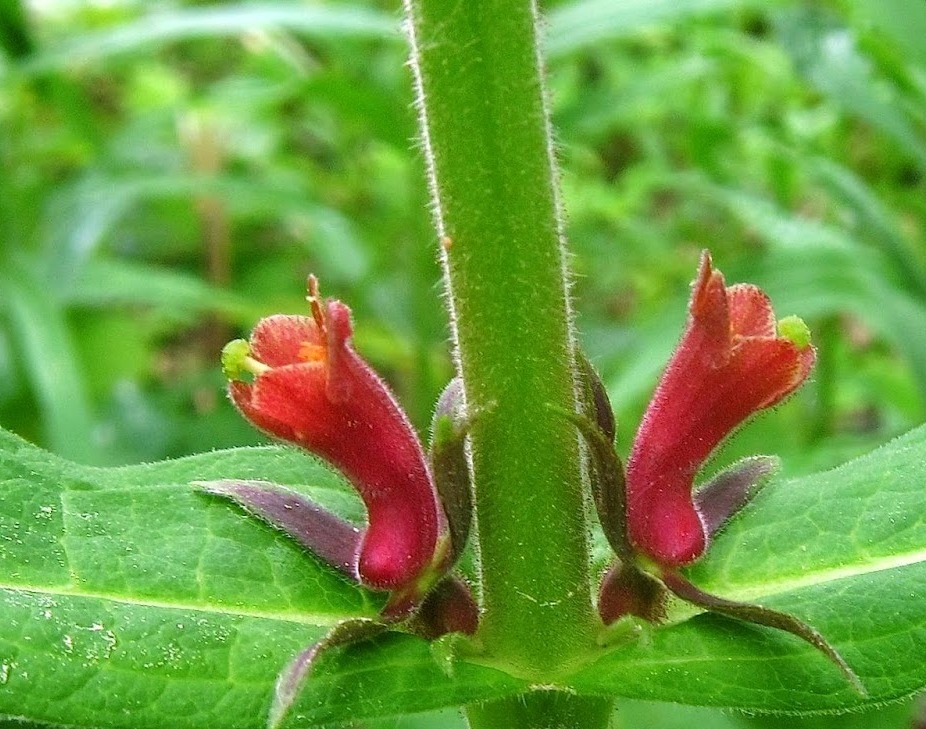Orangefruit horse-gentian
(Triosteum aurantiacum)

Description
Triosteum aurantiacum, also known as orangefruit horse-gentian, is a perennial species of Triosteum native to North America. Triosteum aurantiacum may grow from 2 to 4 feet (0.6 to 1.2 m) in height. Triosteum aurantiacum has been used to treat a variety of medical issues by Native Americans, and can be used as a coffee substitute when roasted. Triosteum, commonly known in American English as horse-gentian or, less commonly, feverwort, and, in Standard Chinese as (ting zi biao shu), is a genus of flowering plants belonging to the family Caprifoliaceae. A genus of six species in total, it has three species native to North America, and three more in eastern Asia. The name Triosteum is a compound of the Greek tria 'three' and osteon 'bone', in reference to the three hard pyrenes ( pips / pits ) in each drupe ( berry ) - giving the meaning 'having three pits ( as hard as ) bone'. Triosteum spp. are perennial, herbaceous plants of rich woods. Each plant typically consists of at least one erect, round, hairy, fistular stem, 1 to 4 feet (0.3 to 1.2m) high, with opposite ovate-lanceolate entire leaves, and whitish to purplish flowers presented either in axillary whorls or terminal racemes. The fruit is a drupe. It may be white, yellow, orange, or red, depending on the species. Certain species in the genus are sometimes cultivated for their colorful fruits, although the plants have been characterised as 'somewhat weedy perennials' and their flowers are, in general smaller and less showy than those of the related genus Lonicera, the Honeysuckles. American species : the dried and roasted fruits have been occasionally used as a substitute for coffee; but they are chiefly valued for their medicinal properties, the roots having been used as an emetic and mild cathartic. The drug is sometimes called Tinker's root, after Dr. Tinker, who first brought it to notice. Asiatic species : The ripe fruits of Triosteum himalayanum Wallich. have been used for 'blood purification' in the Himalayas. The concept of a medicinal plant that 'purifies the blood' is not one recognised by modern medicine, although the effects of plants believed in folk medicine and more recently in alternative medicine to possess such a property are often cholagogue, laxative and / or diuretic.
Taxonomic tree:







